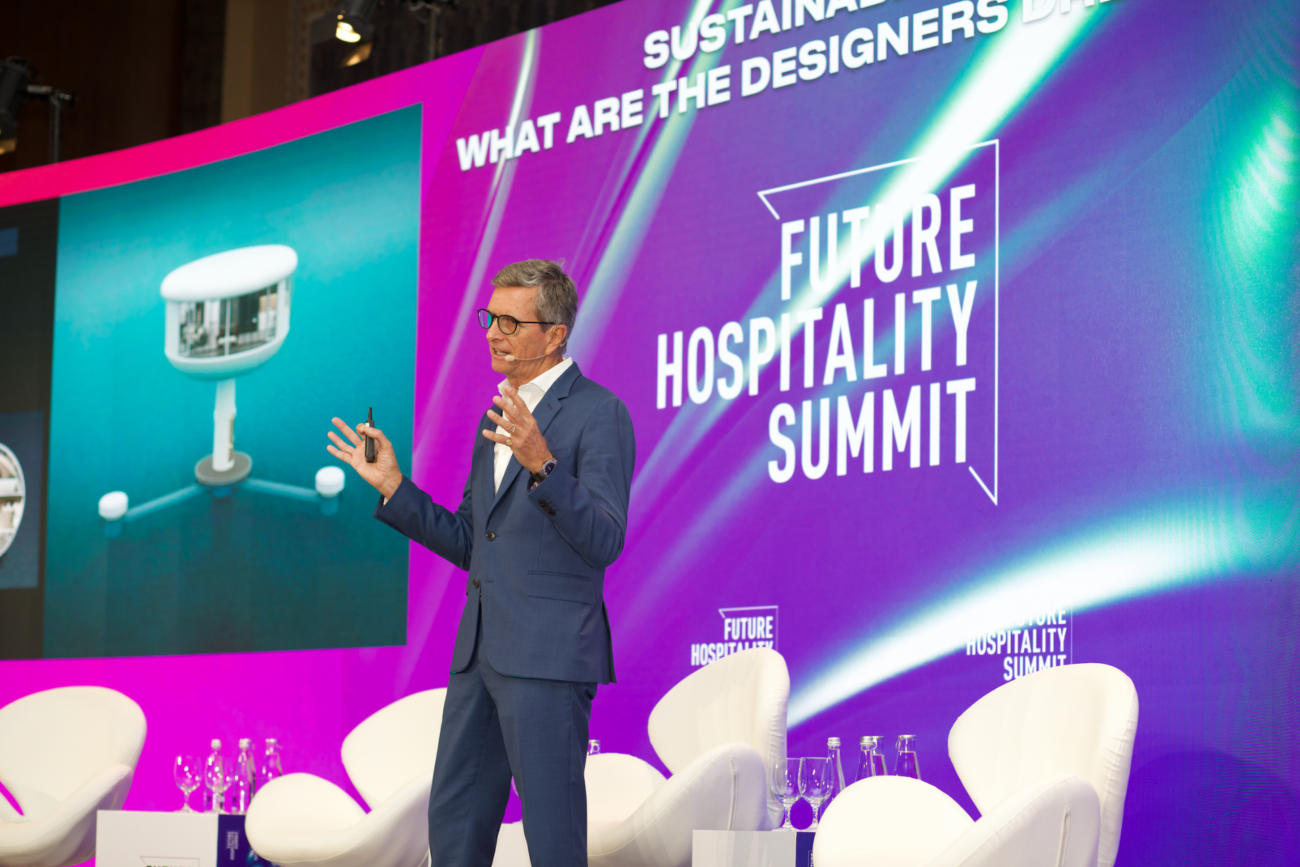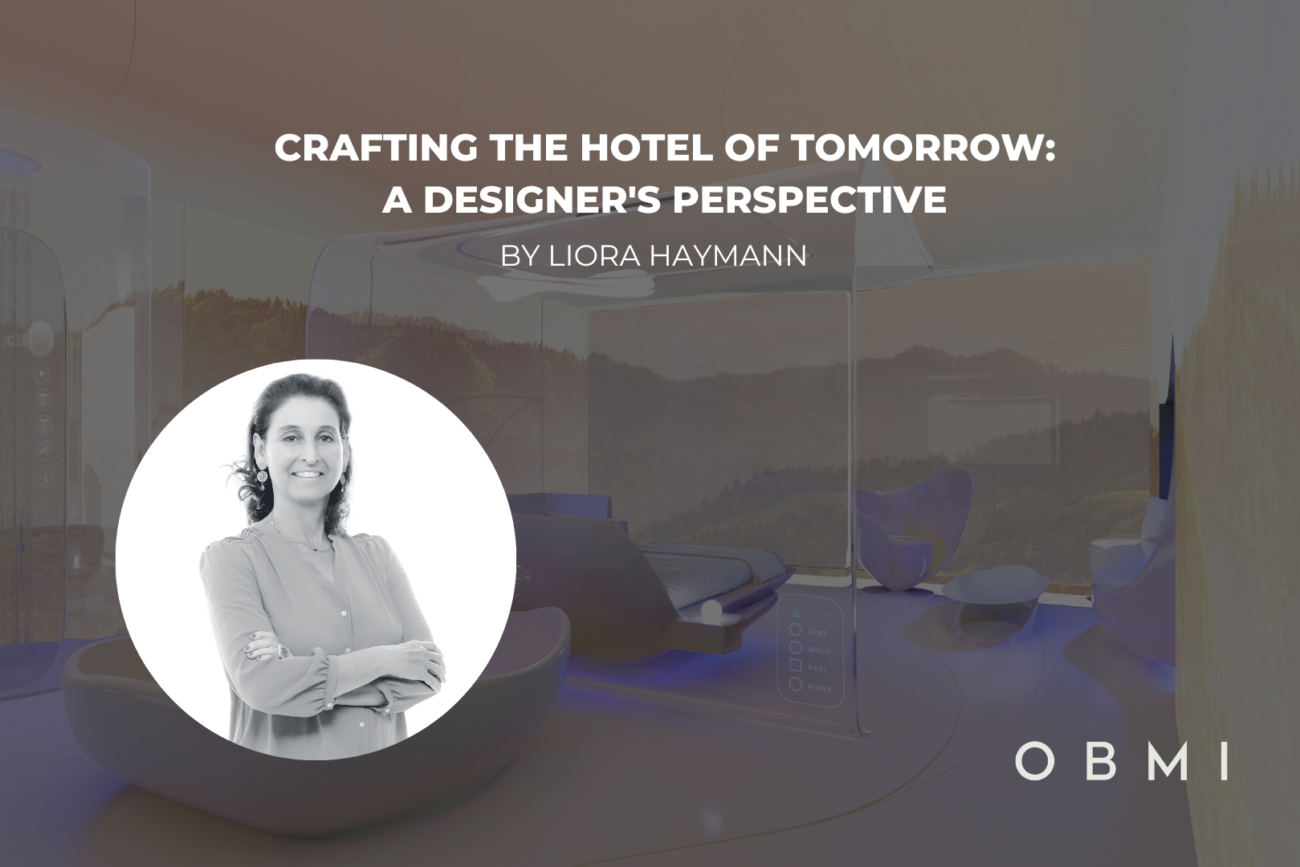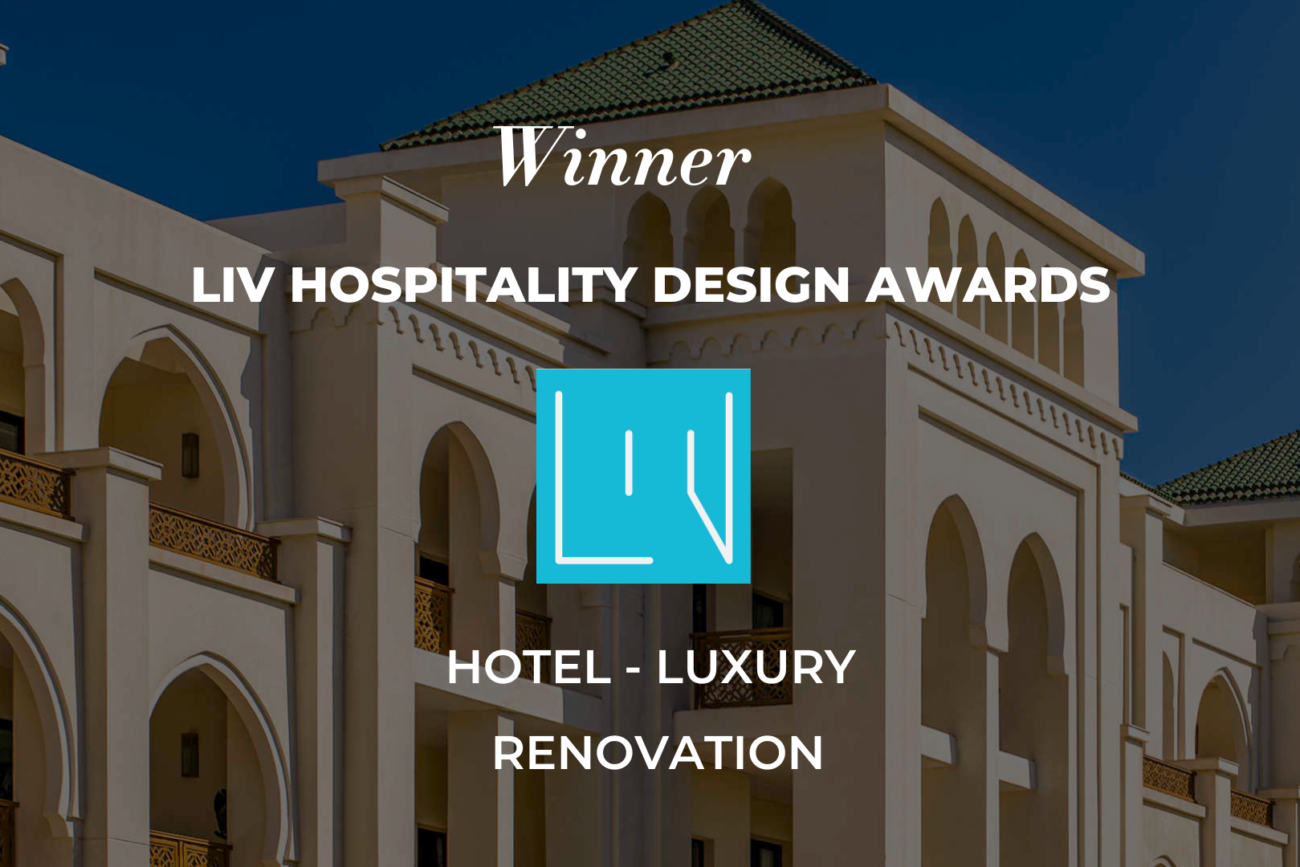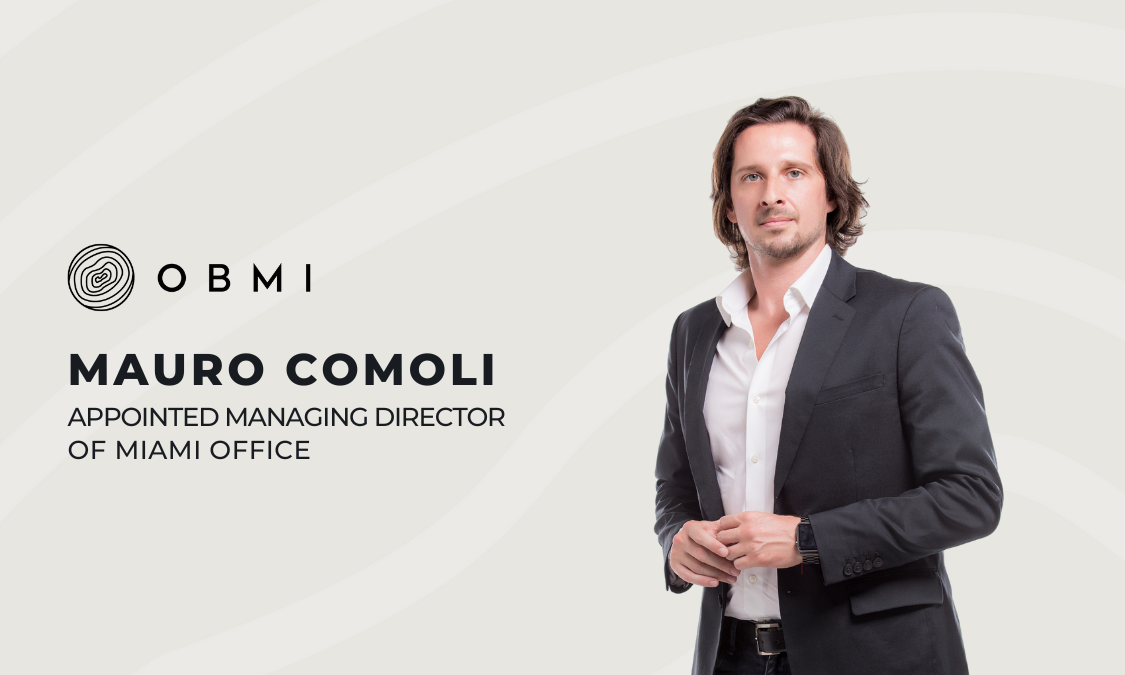OBMI Showcases Sustainable Hospitality Innovations at the Future of Hospitality Summit
At the Future Summit OBMI Chairman Tim Explored Sustainable Innovations Supporting Ambitious Hospitality Developments in the Middle East & Beyond

The Future Hospitality Summit (FHS) in Dubai recently assembled the Middle East region’s A-list of hospitality stalwarts and brands – many of whom chose the event as a platform to announce the signing of deals worth millions of dollars. Held from September 19-21 at the Madinat Jumeirah and co-organized by MEED and The Bench combined the Arabian Hotel Investment Conference (AHIC), African Hospitality Investment Forum (AHIF), and Global Restaurant Investment Forum (GRIF). The event gathered over 1,000 attendees to learn from industry leaders’ key insights and analytics contributing to the roadmap for hospitality.
The theme for the event was Lead The Change and staying true to it, OBMI Chairman Tim Peck led a keynote session, Sustainability: What Designers Are Dreaming Up, exploring revolutionary design concepts and thought-provoking strategies supporting bold and ambitious developments throughout the region and beyond. Pushing the boundaries of innovation and creating future mindsets that will change the world, the session challenged how delegates viewed sustainability and garnered excitement to support significant sustainable contributions in achieving a more positive future for the hospitality industry.
Beginning with the most pressing question on everyone’s mind when considering hospitality, Peck opened his presentation emphasizing “What’s next?” — especially regarding sustainability. With the impacts of climate change on our planet and industry, the session focused on designs currently in development and concepts on the boards that have the potential to answer the concerns of hospitality guests and have a positive influence on the overall vacation experience.
With Circularity as a key principle in many exciting new projects in the region and worldwide, Peck shared how Circularity influences the approach to that interconnectedness resulting in enhanced environmental preservation and wellness through projects like Neom’s The Line and Coral Bloom at Shurayrah Island. Projects like Seapod, designed by Ocean Builders, and the movable hotel concept created by OBMI, were envisioned to adapt and move to honor the earth first – providing a rapid installation that is both economical and environmentally conscious. Using sustainable concepts that mimic nature to mitigate risk from environmental disasters and impact on their surrounding environment, Tsunami Park Skyscraper and Swedish Treehouse Hotel were showcased for truly unique accommodation experiences.
Peck also brought attention to the impact of travel to many idyllic resort locations and those leading the change to greenhouse gas emissions, such as the Zero-Emission Aviation Powertrain by ZeroAvia and the use of sustainable aviation fuel through producers like Finnish Firm Neste. On an interesting side note, Formula 1 racing is also exploring sustainable fuels – supported by Aramco, to maintain the sport’s viability into the future. Saudi Arabia’s petroleum giant, Saudi Aramco, and CEMEX, a Mexican cement company, are just two examples of companies that have teamed up with sustainable aviation fuel partners. A process extracts the CO2 from fuel refineries and cement production to create sustainable fuel, leveraging the two significant sources of carbon dioxide to create a perfect marriage.
To highlight how designers practically implement sustainability in terms of systems and materials within resorts, Peck took a closer look at OBMI’s work to realize the vertical resort concept, Aera. OBMI partnered with CASE — the Center for Architecture Science and Ecology in Brooklyn, New York, an academic and professional collaboration advancing the built environment through education, research, and built projects, to assist sustainable operating systems for the resort based on phytoremediation. OBMI designers and CASE worked to establish a baseline and make this concept quantifiable at scale with existing plant species for a truly impactful sustainability solution for hospitality design to leverage benefits such as air purification. As for air-borne toxins other than CO2, Peck explained how CASE is exploring research pioneered by NASA for Mars expeditions for the ability of plant roots to act as bio-filters. The same 60,000 square meters of Greenwall that purifies the air in Aera is planned to be powered by greywater to allow recycling of future toilet flushing before it leaves the building as blackwater. The greywater treatment via the Greenwall was also highlighted to reduce the need to introduce external water, a key consideration in water-depleted destinations, such as the Middle East.
The presentation discussed the continued benefits of Aera’s use of phytoremediation and outlined the impacts of sustainability through passive air conditioning. Placed just inside Aera’s PTFE cloth skin, shade planting creates a microclimate, protecting resort occupants from extreme temperatures in hot environments and reducing the need for mechanical air conditioning. The minimization of energy requirements through Aera’s sustainable design results in a positive impact on the environment and a positive impact on the hotel owner’s bottom line. The presentation detailed how the visible vegetation through the resort’s skin enables Aera to become a good citizen in its neighborhood, providing a distinct and appealing addition to the city skyline. The resort’s opportunity to offer edible plants is yet another aspect of phytoremediation that can impact sustainability.
Peck outlined that instead of transporting food from elsewhere, Aera can grow edible farms on-site to be used at the resort’s restaurants, offering “landscape to table” while at the same time contributing to air purification and passive air conditioning. Along with the prior mentioned benefits, proximity to plants was highlighted for their use for psychological and holistic human wellness. This type of design has quantifiable financial benefits noted in a study by the Harvard T.H. Chan School of Public Health demonstrated that a $40 per person per year increased expenditure on improving air quality results in HR savings of $6,000 to $7,000 per person per year in reduced sick days. Peck shared the numbers crunched by CASE that determined how 100% fresh air breathed in Aera by its 306 staff members would result in more than $1.8 million in savings on potential sick days every year.
To optimize all of the positive effects of phytoremediation, Peck proudly shared with FHS attendees that CASE is actively compiling an exhaustive database of plants based on their response to five contributing factors: water, light, temperature, humidity, and nutrients. The database will serve as a bio-climatic design menu, enabling resort designers to utilize plants in the built environment to connect sustainability and human health in the hospitality context. Through this distinct approach, designers create a natural circulatory system in the middle of the built environment’s technical mechanical, electrical, and sewage systems. The result repositions nature from a peripheral role to a central one in the resort experience.
Peck closed by sharing that these examples conceived by designers, architects, scientists, and researchers all utilize biophilic and sustainable design to create low, zero, or carbon positive environments. These sustainable concepts represent opportunities for developers and hoteliers to offer holistic guest experiences that promote and improve human comfort and wellness for a future of a truly sustainable hospitality industry.






